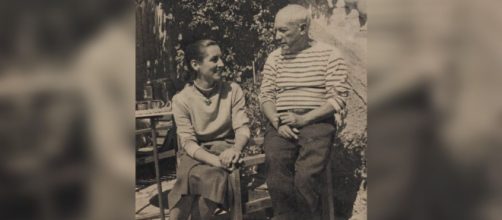The announcement from the Picasso Museum in Paris came across as self-congratulatory. And the unquestioning media coverage also blew the museum’s trumpet.
The announcement, noted by The Washington Post, went like this: “Picasso tried to ruin his ex’s career. The Picasso Museum will show her art.”
A profile in courage?
The Guardian’s headline reported the boast in a similar way: “Picasso Museum to show work of Françoise Gilot, ex-partner he tried to destroy.”
After recounting how Gilot was shunned by the art world at Picasso’s urging after their split, The Guardian went on about how the museum allotted her a room of her own.
“Now, the museum is aiming to change that: It unveiled a new collection Tuesday that features a room dedicated to Gilot’s work,” reads the article published in The Washington Post.
“Now”? Only now is the museum doing Gilot right? She died last year at age 101, waiting some seven decades for such acknowledgment of her work.
Continuing the museum’s crowing, The Washington Post pointed out that the room dedicated to Gilot’s work is a first in France – as if the museum’s shameless delayed reaction wasn’t something to be embarrassed about.
Noblesse oblige
The decision to grant exhibit space to Gilot has the look of the privileged museum world granting an act of charity toward the less privileged, namely Gilot.
Never mind that the Met and MoMA collect her work.
The museum’s curator of painting, Joanne Snrech, conceded to The Washington Post that Picasso vengefulness caused Gilot a very limited presence in French public collections.
As the curator put it: “It seems absolutely insane that she was known as Picasso’s companion and the mother of her children even though she had this 80-year-long career.”
The goal of the Gilot exhibit, said the curator, is to show her as a painter in her own right, “not just as a companion to Picasso.”
At this point, I have to wonder if Gilot would welcome this museum space. She was the only woman in Picasso’s lengthy list of mistresses and wives who walked out on him. Would she want to be in a museum dedicated to him?
When she left him, she quoted him in her 1964 book “My Life with Picasso”: "You imagine people will be interested in you? ... Even if you think people like you, it will only be a kind of curiosity they will have about a person whose life has touched mine."
When Gilot famously said of paintings, “Reality must be torn apart in every sense of the word,” you could also apply that to her relationship with Picasso.
And talk about reality, the Gilot room at the Picasso Museum will last only until the end of the year.
So, all this ado fanfare for a short-lived exhibit. All the works had to be borrowed, you see. The Picasso Museum doesn’t own a single one of Gilot’s paintings.
Last year, when she died, I headlined my story about her passing, “Skip the obits, Françoise Gilot was more than Picasso’s mistress.” The Paris museum comes very late to that conclusion.
What’s more, Gilot’s connection to Picasso is irrelevant to her story. She was his mistress only 10 years. She was the wife of Jonas Salk, the virologist famed for the polio vaccine, for 25 years.
You can spot Gilot’s difficult history with Picasso before it ended in the body language they show in a photograph taken in 1951 after five years living together.
Although Gilot didn’t leave Picasso for five more years, you can see telltale signs that this will happen in their individual gestures.
She, with hands behind her back, detached, independent and he, holding on to her, predicting the inevitability of the split.


